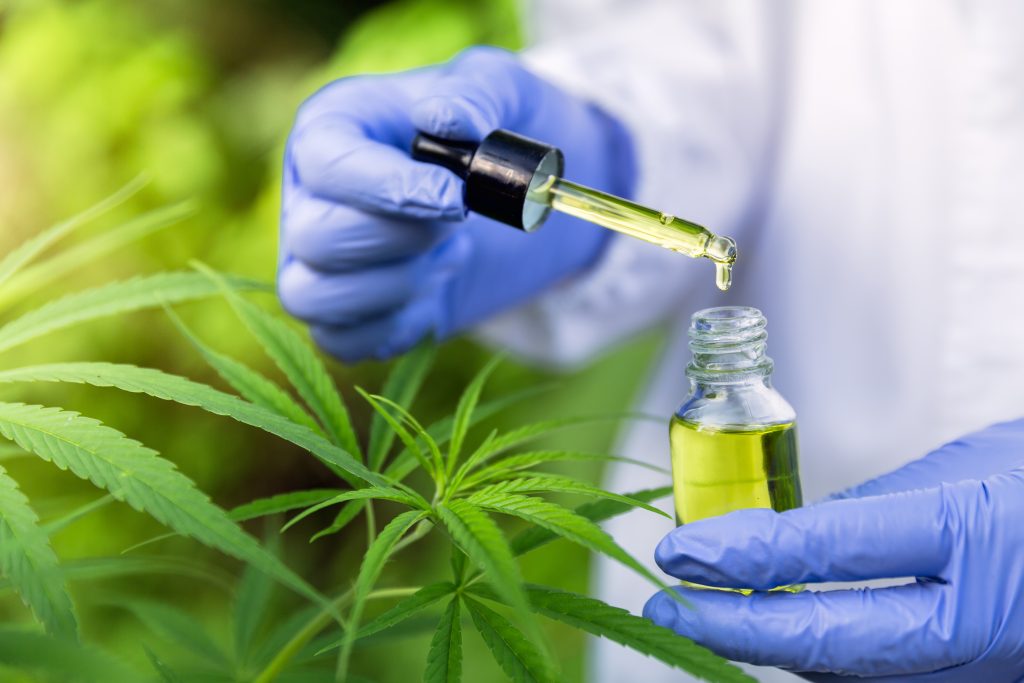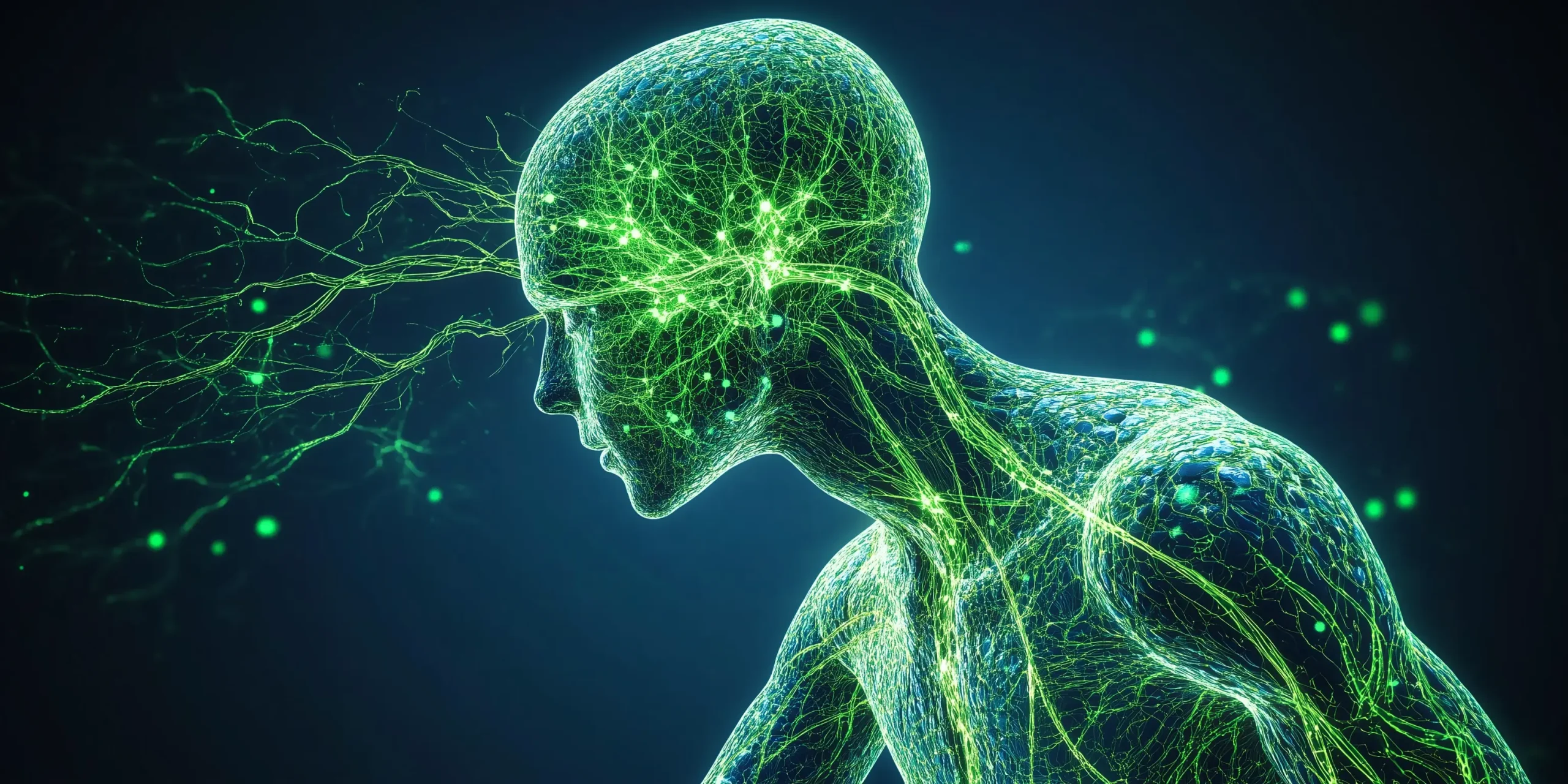Medizinisches Cannabis bei Epilepsie: CBD-Wirkung & Therapieoptionen
In Deutschland treten epileptische Anfälle ohne ersichtlichen Auslöser bei ungefähr einem von 100 Menschen auf. Werden Gelegenheitsanfälle hinzugerechnet, erleiden schätzungsweise zehn von 100 Menschen mindestens einen Anfall im Laufe ihres Lebens¹. Medizinisches Cannabis, speziell das Cannabinoid CBD, zeigt vielversprechende Ergebnisse in der Epilepsiebehandlung.Epilepsie und medizinisches Cannabis: Hoffnung für ein besseres Leben
Ein epileptischer Anfall kann das Leben in Sekunden verändern. Die Angst vor dem nächsten Anfall überschattet oft den Alltag von Betroffenen und ihren Familien. Doch es gibt Hoffnung: Medizinisches Cannabis, insbesondere Cannabidiol (CBD), bietet vielversprechende Ansätze, um Epilepsie zu kontrollieren und die Lebensqualität zu steigern. Zunächst widmen wir uns den Möglichkeiten der Cannabis-Therapie bei Epilepsie, bevor wir allgemeine Aspekte wie Epilepsie-Ursachen, Symptome und alternative Behandlungsmöglichkeiten besprechen.
Medizinisches Cannabis bei Epilepsie: Ein Weg zur Linderung
Epilepsie betrifft weltweit Millionen von Menschen, und für viele bleibt die Krankheit trotz Medikamenten unkontrolliert. Hier kommt medizinisches Cannabis ins Spiel. Cannabidiol (CBD) hat in Studien gezeigt, dass es die Häufigkeit und Schwere von Anfällen reduzieren kann, insbesondere bei schweren Formen wie dem Dravet-Syndrom oder Lennox-Gastaut-Syndrom1,2. Im Gegensatz dazu ist THC bei Epilepsie nicht als wirksam anerkannt. Studien zeigen, dass THC Nebenwirkungen wie eine mögliche Verschlimmerung von Anfällen hervorrufen kann, weshalb es in der Epilepsie-Therapie kaum eine Rolle spielt3. Ein Termin bei einem Neurologen kann klären, ob Cannabis auf Rezept für Sie infrage kommt.

Cannabidiol (CBD) und Epilepsie: Wie wirkt es?
CBD bei Epilepsie interagiert mit dem Endocannabinoid-System, das die neuronale Aktivität reguliert. Dadurch kann Cannabidiol Epilepsie-Anfälle dämpfen und die Anfallshäufigkeit reduzieren1,2. Epidyolex, ein zugelassenes CBD-Öl bei Epilepsie, wird in Form einer oralen Lösung verabreicht. Die Dosierung beginnt niedrig und wird individuell angepasst, abhängig von Gewicht und Verträglichkeit. Konkrete Dosierungs-Pläne erstellt Ihr Arzt, da eine enge Überwachung erforderlich ist4. Vereinbaren Sie ein Arztgespräch, um die richtige Cannabis-Therapie bei Epilepsie zu finden.
THC und Epilepsie: Keine gesicherte Wirkung
Während CBD-Wirkung bei Epilepsie gut belegt ist, bleibt THC bei Epilepsie umstritten. Studien zeigen keine überzeugenden Beweise für eine antiepileptische Wirkung von THC.
Studienlage zu Cannabis und Epilepsie
Die Epilepsie-Studienlage zu Cannabis ist vielversprechend, aber unterschiedlich je nach Patientengruppe. Bei Kindern mit seltenen Epilepsieformen wie Dravet- oder Lennox-Gastaut-Syndrom zeigen Studien klare Vorteile von CBD bei Epilepsie, mit signifikanter Reduktion der Anfälle5,6. Bei Erwachsenen ist die Evidenz schwächer, da groß angelegte Studien fehlen. Cannabis-Studien zu Epilepsie bei Erwachsenen zeigen zwar positive Einzelfälle, aber keine breite Bestätigung7. Langzeitdaten zur Sicherheit und Wirksamkeit von Cannabis-Therapie bei Epilepsie sind begrenzt, was weitere Forschung erfordert8.
Praxisbeispiel: Cannabis Erfahrungen bei Epilepsie
Eine 35-jährige Patientin mit therapieresistenter Epilepsie litt seit Jahren unter wöchentlichen Anfällen. Nach einem Gespräch mit einem Neurologen begann sie eine Therapie mit Epidyolex. Die Dosis wurde langsam gesteigert, und nach drei Monaten sank die Anfallshäufigkeit um die Hälfte. Regelmäßige Blutkontrollen waren nötig, um Cannabis Wechselwirkungen mit anderen Medikamenten zu überwachen. Dieser Fall zeigt: Cannabis Erfahrungen bei Epilepsie können positiv sein, erfordern aber Geduld und ärztliche Begleitung. Buchen Sie ein Gespräch, um Ihre Möglichkeiten zu prüfen.
Nebenwirkungen und Wechselwirkungen von CBD
CBD Nebenwirkungen bei Epilepsie umfassen Schläfrigkeit, Appetitverlust, Durchfall oder selten eine Zunahme von Anfällen9. Cannabis Wechselwirkungen mit Medikamenten wie Clobazam oder Valproat sind häufig, da CBD deren Blutspiegel erhöhen kann10,11. Regelmäßige Kontrollen von Leberwerten und Medikamentenspiegeln sind unerlässlich. Ein Neurologe hilft, die Cannabis-Therapie sicher zu gestalten – vereinbaren Sie einen Termin.
Kostenübernahme von Cannabis bei Epilepsie
Die Kosten für Epidyolex oder andere Cannabis-Medikamente können 2000–3000 Euro monatlich betragen12. In Deutschland ist eine Cannabis Kostenübernahme durch Krankenkassen möglich, erfordert aber einen Antrag mit ärztlicher Begründung. Der Prozess kann komplex sein, doch ein Arztgespräch klärt, ob Cannabis auf Rezept für Sie infrage kommt.
Rechtliche Aspekte und Änderungen 2024: Cannabis legal bei Epilepsie
Medizinisches Cannabis unterlag in Deutschland dem Betäubungsmittelgesetz (BtMG) und wurde durch das Medizinal-Cannabisgesetz (MedCanG) ersetzt. Seit April 2024 kann es auf ein einfaches Rezept von qualifizierten Ärzten, meist Neurologen, verschrieben werden, ohne die bisher erforderliche Betäubungsmittelrezeptierung13,23. Die Cannabis Verschreibung bei Epilepsie setzt eine genaue medizinische Indikation voraus, etwa für zugelassene Präparate wie Epidyolex bei seltenen Epilepsieformen. Für Cannabis bei Kindern mit Epilepsie gelten strengere Vorgaben: Die Therapie erfolgt durch spezialisierte Zentren, um Sicherheit und Wirksamkeit zu gewährleisten14.
Änderungen 2024: Einfacher Zugang zu Cannabis auf Rezept
Das Cannabisgesetz (CanG) und das Medizinal-Cannabisgesetz (MedCanG) von 2024 haben den Zugang zu medizinischem Cannabis erleichtert. Cannabis auf Rezept ist nun schneller verfügbar, da Ärzte es auf ein einfaches Rezept verschreiben können und Telemedizin für Beratungen anerkannt ist13,23. Dennoch bleibt eine ärztliche Diagnose entscheidend, um die richtige Cannabis-Therapie bei Epilepsie sicherzustellen. Selbstmedikation über den Schwarzmarkt birgt hohe Risiken: Ungeprüfte Produkte können Verunreinigungen wie Pestizide oder Schwermetalle enthalten und unklare Wirkstoffgehalte aufweisen, was die Anfallskontrolle gefährden kann8. Ein Arztgespräch ist der erste Schritt, um Cannabis legal bei Epilepsie sicher zu nutzen.
Selbstmedikation: Ein Risiko bei Epilepsie
Epilepsie und Selbstmedikation mit frei verkäuflichem CBD-Öl oder Hanföl bei Epilepsie ist gefährlich. Diese Produkte sind nicht standardisiert, nicht medizinisch geprüft und können unwirksam oder schädlich sein15. Vertrauen Sie auf Cannabis auf Rezept und lassen Sie sich ärztlich beraten.
Mythen über Cannabis und Epilepsie
Ein häufiger Mythos ist, dass Cannabis jede Epilepsie heilt oder THC genauso wirksam wie CBD ist. Tatsächlich ist CBD bei Epilepsie nur für bestimmte Formen zugelassen, und THC zeigt keine Vorteile3,4. Eine individuelle Therapieplanung durch einen Arzt ist entscheidend.
Was ist Epilepsie? Ursachen, Symptome und Diagnose
Epilepsie ist eine neurologische Erkrankung mit unprovozierten Anfällen durch elektrische Entladungen im Gehirn16. In Deutschland betrifft sie etwa 1 von 100 Menschen17.
Epilepsie Ursachen
Die Ursachen einer Epilepsie sind vielfältig: Genetische Veränderungen, Hirnschäden durch Schlaganfall oder Tumore können Anfälle auslösen. Bei etwa 50 % der Betroffenen bleibt die Ursache unklar18.
Epilepsie Symptome
Epilepsie Symptome variieren je nach Anfallstyp:
- Fokal: Wahrnehmungsveränderungen, Schwindel, Halluzinationen18.
- Generalisiert:
- Tonisch: Verkrampfung18.
- Klonisch: Zuckungen19.
- Tonisch-klonisch: Verkrampfung und Zuckungen19.
- Atonisch: Muskeltonusverlust18.
- Myoklonisch: Schnelle Zuckungen18.
- Absencen: Bewusstseinspausen18.
Ein Status epilepticus (>5 Minuten) ist ein Notfall19.
Epilepsie Diagnose
Die Epilepsie Diagnose basiert auf Anamnese, Berichten von Angehörigen und Tests wie EEG, CT/MRT oder Lumbalpunktion19. Zwei unprovozierte Anfälle oder ein Anfall mit hohem Risiko bestätigen die Diagnose20.
Epilepsie Behandlungsmöglichkeiten
Neben Cannabis-Therapie gibt es weitere Epilepsie Behandlungsmöglichkeiten:
- Epilepsie Medikamente: Antiepileptika wie Valproat, mit Nebenwirkungen wie Schwindel oder Müdigkeit21,22.
- Epilepsie Chirurgie: Entfernung des Anfallsherds23.
- Vagusnerv-Stimulation: Gerät zur Anfallsreduktion23.
- Ketogene Diät: Fettreiche Diät, besonders bei Kindern wirksam23.
Ein Neurologe hilft, die beste Therapie zu finden – buchen Sie ein Gespräch.

Häufig gestellte Fragen (FAQ) zu Epilepsie und Cannabis
Wer kann Cannabis bei Epilepsie nutzen?
Welche Nebenwirkungen hat CBD bei Epilepsie?
Wie wird Cannabis verschrieben?
Wie läuft die Kostenübernahme ab?
Wie wirkt CBD bei Epilepsie?
Unterstützung finden
Die Deutsche Epilepsievereinigung oder Kliniken wie die Uniklinik Freiburg bieten Beratung24. Vereinbaren Sie ein Arztgespräch bei Canify clinics, um Ihre Epilepsie-Therapie zu optimieren.
Fazit: Ihr Weg zu mehr Lebensqualität
Medizinisches Cannabis eröffnet neue Perspektiven für Epilepsie-Patienten. Gerade CBD hat großes Potenzial, Anfälle zu reduzieren. Lassen Sie sich von unseren Ärzten beraten und vereinbaren Sie noch heute ein Gespräch, um Ihre Epilepsie Behandlungsmöglichkeiten zu erkunden.
Quellenangaben
- Gaston, T. E. & Szaflarski, J. P. Cannabis for the Treatment of Epilepsy: an Update. Curr Neurol Neurosci Rep18, (2018).
- Golub, V. & Reddy, D. S. Cannabidiol Therapy for Refractory Epilepsy and Seizure Disorders. Adv Exp Med Biol1264, 93–110 (2021).
- Klotz, K. A. et al. Risks and benefits of cannabis and cannabinoids in epilepsy treatment. Expert Opin Drug Saf18, 1113–1123 (2019).
- Epidyolex® Fachinformation, EMA (2021).
- Laux, L. C. et al. Long-term safety and efficacy of cannabidiol in children and adults with treatment resistant Lennox-Gastaut syndrome or Dravet syndrome. Epilepsy Res 154, 13–20 (2019).
- Gaston, T. E. & Friedman, D. Pharmacology of cannabinoids in the treatment of epilepsy. Epilepsy Behav 70, 313–318 (2017).
- Lattanzi, S. et al. Highly Purified Cannabidiol for Epilepsy Treatment: A Systematic Review. CNS Drugs 35, 265–281 (2021).
- Devinsky, O. et al. Cannabidiol: pharmacology and potential therapeutic role in epilepsy and other neuropsychiatric disorders. Epilepsia 55, 791–802 (2014).
- Lattanzi, S. et al. Cannabidiol efficacy and clobazam status: A systematic review and meta-analysis. Epilepsia 61, 1090–1098 (2020).
- Geffrey, A. L. et al. Drug–drug interaction between clobazam and cannabidiol in children with refractory epilepsy. Epilepsia 56, 1246–1251 (2015).
- Perucca, P. et al. Adverse antiepileptic drug effects. Neurology 72, 1223–1229 (2009).
- de Kinderen, R. J. A. et al. Side-effects of antiepileptic drugs: The economic burden. Seizure 23, 184–190 (2014).
- Bundesgesundheitsministerium. Fragen und Antworten zum Gesetz ‘Cannabis als Medizin’ (2017).
- Laux, L. C. et al. Long-term safety and efficacy of cannabidiol in children and adults with treatment resistant Lennox-Gastaut syndrome or Dravet syndrome. Epilepsy Res 154, 13–20 (2019).
- Devinsky, O. et al. Cannabidiol: pharmacology and potential therapeutic role in epilepsy and other neuropsychiatric disorders. Epilepsia 55, 791–802 (2014).
- Epilepsien – Neurologienetz.de.
- Epilepsy | Gesundheitsinformation.de.
- Epilepsie: Definition, Formen, Auslöser, Therapie – NetDoktor.de.
- Fisher, R. S. et al. Standards und Leitlinien Operationale Klassifikation der Anfallsformen durch die Internationale Liga gegen Epilepsie. Zeitschrift für Epileptologie 31, 272–281 (2018).
- Fisher, R. S. et al. Standards und Leitlinien Operationale Klassifikation der Anfallsformen durch die Internationale Liga gegen Epilepsie. Zeitschrift für Epileptologie 31, 272–281 (2018).
- Perucca, P. et al. Adverse antiepileptic drug effects. Neurology 72, 1223–1229 (2009).
- de Kinderen, R. J. A. et al. Side-effects of antiepileptic drugs: The economic burden. Seizure 23, 184–190 (2014).
- Luoni, C. et al. Determinants of health-related quality of life in pharmacoresistant epilepsy. Epilepsia 52, 2181–2191 (2011).
- Deutsche Epilepsievereinigung: Patienteninformationen.





